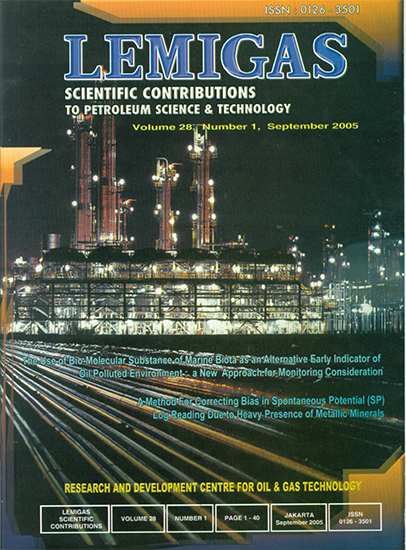ENVIRONMENTAL MANAGEMENT AND MONITORING EFFORTS (UKL-UPL) FOR OIL AND GAS SECTOR
DOI:
https://doi.org/10.29017/SCOG.28.1.1033Keywords:
Environmental Management, Monitoring Efforts (Ukl-Upl), Oil And Gas SectorAbstract
Environmental monitoring is an integrated activity of the environmental management in general. Normally, any activity or industry has a written environmental management program called Environmental Management Plan or Rencana Pengelolaan Lingkungan (RKL). This document that has to be legalized or approved by the government describes an environmental management program that shall be implemented by the industry following the establishment of a project. Eventually, success of the RKL implementation can be monitored through environmental monitoring program that has been described in a document defined as Environmental Monitoring Plan or Rencana Pemantauan Lingkungan (RPL). Both RKL and RPL are the environmental management system planning documents that are established following the environmental impact assessment (EIA) AMDAL (Analisis Mengenai Dampak Lingkungan) study for a new project. Regulation regarding with the compulsory for conducting AMDAL is defined in the Government Regulation (Peraturan Pemerintah, PP) No. 29/1986, which is then revised by PP No. 51/1993, and finally by PP. No. 27/1999. Many questions are launched by the oil and gas industries in Indonesia, since these industries have been started their activity long before the AMDAL regulation being put into effect. Moreover, the recent ministerial decree" (Ministerial Decree of Environment No. 17/ 2001) describing the scale limit of the project that has to be preceded by AMDAL study has added confusion to the oil and gas industries. This is not surprising since many of the contracting parties for oil and gas industries in Indonesia have handed over their concession area of oil and gas fields to other parties. The new contracting parties have some difficulties in interpreting the regulations, especially when they intend to develop their contracting area. Shall they conduct EIA/AMDAL study or just Environmental Management and Monitoring Ef forts (Upaya Pengelolaan Lingkungan dan Upaya Pemantauan Lingkungan, UKL-UPL) before implementing the activities? In order to give information especially to the new contracting companies of oil and gas exploration and production those who have bought the concession from the previous companies, the author eager to write this paper describing environmental study that shall be conducted prior the implementation of a new project. Mechanism for requesting a government permit is also included in this paper focusing on upstream activity.References
Anonymous, 1986, Government Regulation (PP) No. 29/1986, describing the
Environmental Impact Assessment (AMDAL).
Anonymous, 1993, Government Regulation (PP) No. 51/1993, describing the
Environmental Impact Assessment (AMDAL).
Anonymous, 1999, Government Regulation (PP) No. 27/1999 describing the
Environmental Impact Assessment (AMDAL).
Anonymous, 2001, Ministerial Decree of Environment, No. Kep. -17/MenLH/2001
describing the EIA for the industries.
Anonymous, 2000, Ministerial Decree of Energy and Mineral Resources, No.
K/28/MEM/2000 de- scribing the Technical Report Guidelines
Downloads
Issue
Section
License
Copyright (c) 1970 SCIENTIFIC CONTRIBUTIONS OIL AND GAS (SCOG)

This work is licensed under a Creative Commons Attribution 4.0 International License.
Authors are free to Share — copy and redistribute the material in any medium or format for any purpose, even commercially Adapt — remix, transform, and build upon the material for any purpose, even commercially.
The licensor cannot revoke these freedoms as long as you follow the license terms, under the following terms Attribution — You must give appropriate credit , provide a link to the license, and indicate if changes were made . You may do so in any reasonable manner, but not in any way that suggests the licensor endorses you or your use.
No additional restrictions — You may not apply legal terms or technological measures that legally restrict others from doing anything the license permits.














